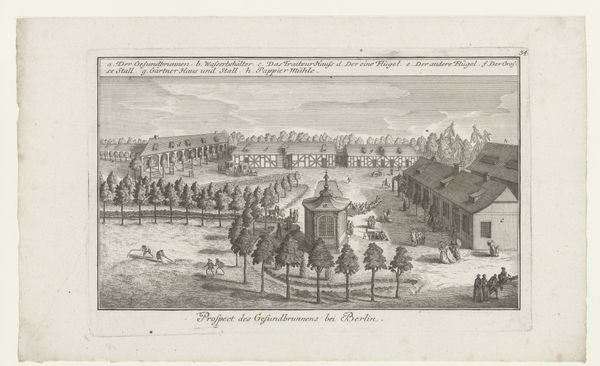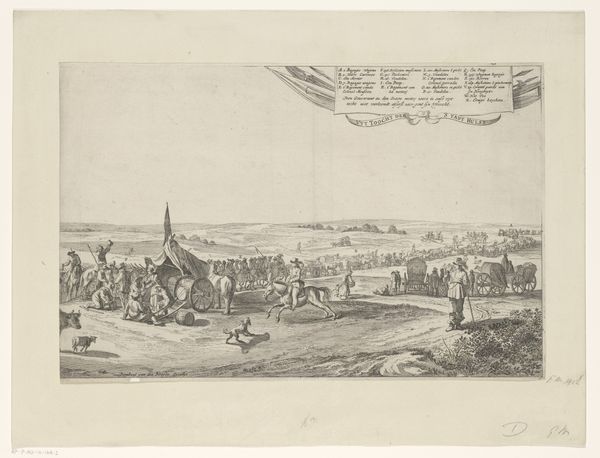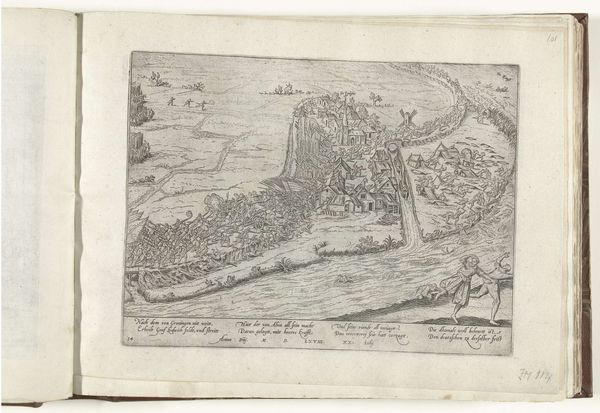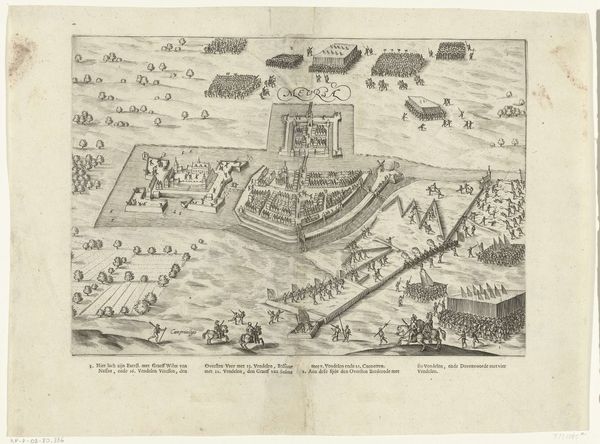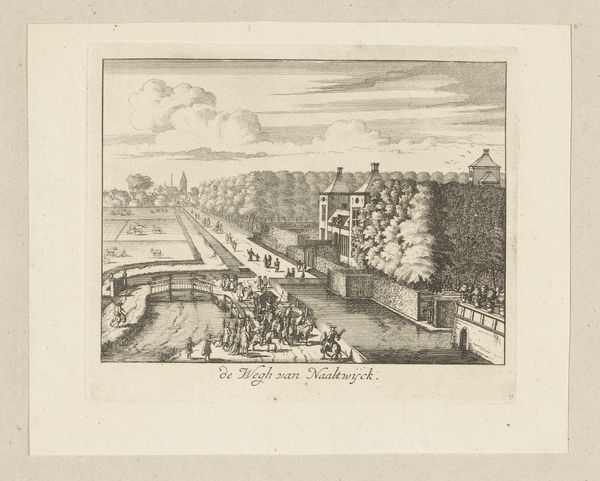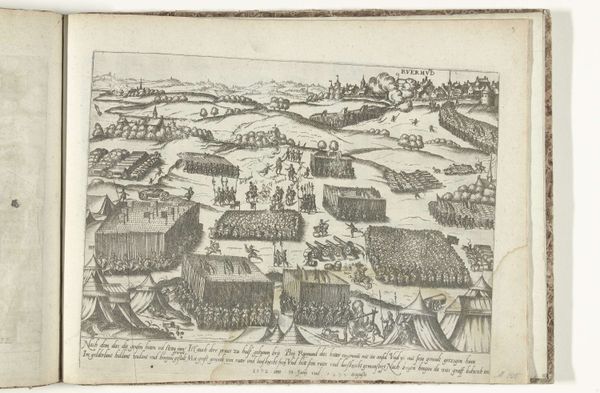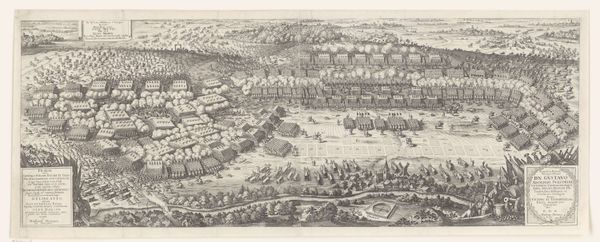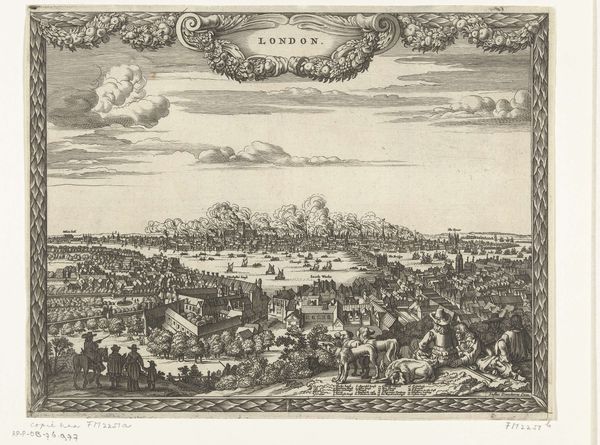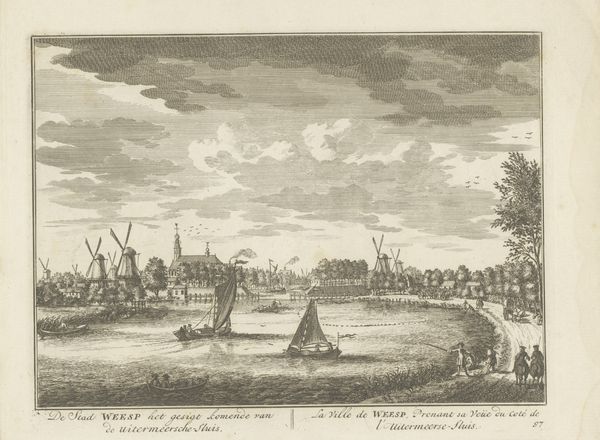
Beleg van Alkmaar in 1573, gezien vanuit het zuiden 1861
0:00
0:00
drawing, print, ink, engraving
#
drawing
#
medieval
# print
#
old engraving style
#
landscape
#
ink
#
history-painting
#
engraving
Dimensions: height 273 mm, width 490 mm
Copyright: Rijks Museum: Open Domain
Curator: Welcome. We are standing before a detailed engraving titled "Beleg van Alkmaar in 1573, gezien vanuit het zuiden," or "Siege of Alkmaar in 1573, Seen from the South." It was created in 1861 by Bernardus Gerardus ten Berge. The Rijksmuseum houses this intricate print, demonstrating a delicate use of line and composition to depict a significant historical event. Editor: It's remarkably calm, isn't it? I mean, for a siege. Looking at the placid depiction of Alkmaar in the distance, smoke plumes rising gently like signals, it's almost bucolic if you ignore the bristling tents in the foreground and all the armed soldiers running amok! It feels as if they are preparing for some town-fair, more than going into a bloody combat. Curator: Observe how ten Berge orchestrates space. He uses a high vantage point to compress depth, enabling us to read the narrative almost as a frieze. The landscape, although vast, is secondary. The clusters of figures – the encampment, the lines of soldiers – serve as visual anchors that foreground the strategic intensity. He even marks it all with heraldic shields, visually coding the significance of each element within a very specific framework. Editor: Yes, there's definitely that sense of order and strategy at play! However, my attention goes to the lines of ordinary folk…those straining figures on the right hauling some enormous cable. You get the impression that beyond kings and heraldry there's an entire drama being written in labor, mud and toil. What were they feeling? Are they hoping for the victory, just hoping to survive, or thinking of something else entirely? I get this undercurrent of the artist pointing toward unsung, invisible histories. Curator: Certainly, one can interpret such gestures towards the universal. However, in purely formal terms, those figures serve a crucial compositional function. They act as a vector, pulling the eye from the right edge of the image towards the focal point of the town. The rhythmic repetition of their forms also introduces movement and a sense of dynamism, crucial for a work rooted in history. Editor: Fair point! But I do enjoy how a close reading of historical tableaus can spark these human echoes from the past. I imagine this is also what attracts history and militaria geeks into a detailed and elaborate "what if's", like the little battles of the hearts happening as the great battle of a city unfolds... Curator: An evocative thought to close with. Indeed, it is within this nexus of formal rigor and evocative storytelling that the enduring appeal of Bernardus Gerardus ten Berge's work resides.
Comments
No comments
Be the first to comment and join the conversation on the ultimate creative platform.
